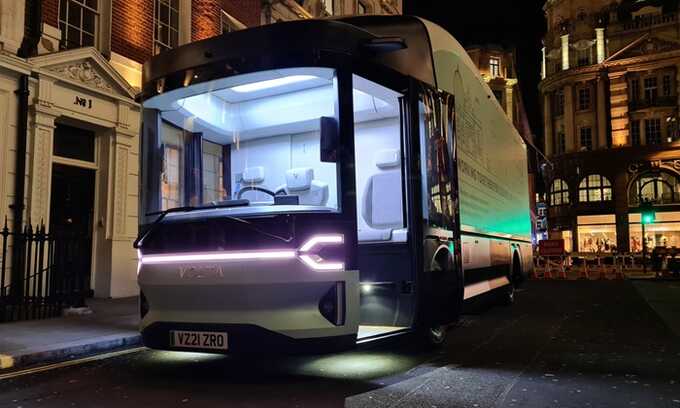UK haulage industry urges investment in electric truck infrastructure

There are just 300 electric HGVs in the 500,000-strong lorry fleet – and only one public charging point, says RHA.
The road haulage industry is calling on the new government to urgently tackle investment in infrastructure for electric trucks, after pointing out there is just one public charging point for HGVs in the whole of the UK.
Takeup of electric cars is soaring, with about 1.1m fully battery-powered cars on British roads and about 63,000 charging units in 33,000 locations, according to Zapmap data.
But the haulage industry is miles behind, with just 300 electric HGVs registered out of the country’s 500,000-strong lorry fleet, says the Road Haulage Association (RHA).
After surveying the country, the RHA found only one public charging point at which lorries can power up. It is located at a service station at Rivington, on the M61 southbound about halfway between Manchester and Preston.
Chris Ashley, policy lead on environment and vehicles at the RHA, said action was needed. He said: “All the anxieties people have with cars, whether it’s raining, whether the windscreen wipers or air conditioning are running, applies to trucks. It depends on the weather and the load.
“On average, a good range for a diesel truck would be 600 miles, with caveats of course. That is why a public charging network is necessary, in our view,” he said.
Research shows 70% of British electric trucks return to depots for recharging overnight, according to the RHA. Longer-haul journeys are impossible on batteries, which means most electric trucks are used for local deliveries within a 50- to 80-mile radius.
The size and weight of trucks means the distance they can achieve on a battery is a fraction of a car, just 200 miles.
The RHA is planning to submit 12 demands to the new government, with polls predicting a Labour win in this week’s election.
It wants the incoming government to build a trial network of HGV charging points, speed up planning applications “gummed up in the wider planning process” for HGV electricy substations at truck depots, and offer financial incentives for small and medium-sized businesses to make the switch to electric.
Trucks cannot be charged outside truckers’ homes and companies with large fleets may need substations installed to cope with the energy consumption, as trucks need at least 150KW of power, compared with a 22KW minimum for cars.
Chris Pritchett, partner and energy and mobility lawyer at the law firm Shoosmiths, said it was “crucially important” the government developed the right strategy to install the charging units at the right places.
Energy and haulage companies may even have to work together to schedule times at the units at motorway stations.
“It will require a sort of utopian level of collaboration,” said Pritchett. “The way forward is more nuanced and complex than for passenger vehicles.”
Work is already under way to tackle the shortage. Energy company Gridserve is leading a government-backed trial to roll out 200 chargers capable of delivering 350kW.
“What we need is momentum and [we’ll] see decarbonisation start to snowball,” said Ashley.
The current government plan is to phase out the sale of diesel and petrol HGVs of 26 tonnes or below by 2035 and the sale of all new HGVs heavier than that by 2040.
The Department for Transport had no comment ahead of the election.
Read more similar news:
Comments:
comments powered by Disqus

































